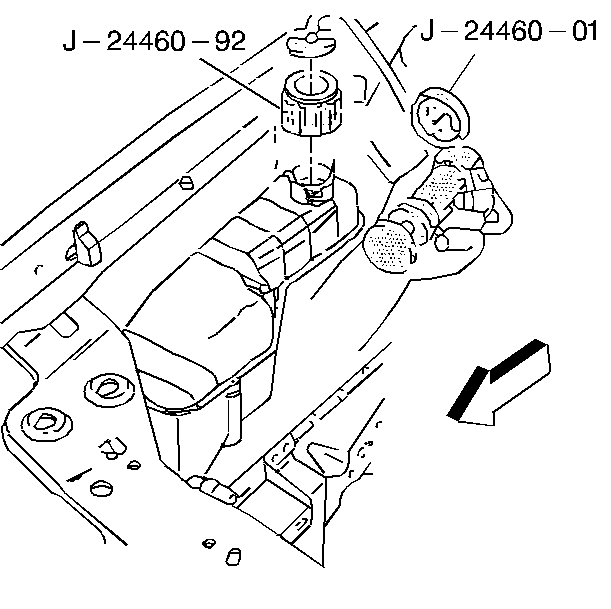- Inspect the connections of the coolant hoses for leaks. Tighten
the clamps as required.
Caution: With a pressurized cooling system, the coolant temperature in the radiator
can be considerably higher than the boiling point of the solution at atmospheric
pressure. Removal of the surge tank cap, while the cooling system is hot and
under high pressure, causes the solution to boil instantaneously with explosive
force. This will cause the solution to spew out over the engine, the fenders,
and the person removing the cap. Serious bodily injury may result.
Caution: Under some conditions, the ethylene glycol engine coolant is combustible.
In order to help avoid being burned, do not spill the antifreeze or the coolant
on the exhaust system or the hot engine parts.
- Remove the surge tank cap.

- Install J 24460-01
to the surge tank. Follow the instructions
supplied with the J 24460-01
.
- Pump J 24460-01
to
103 kPa (15 psi) by operating the plunger handle. Do not exceed
138 kPa (20 psi).
- The pressure reading should remain within the corresponding pressure
segment of the scale for about two minutes.
| • | If a measurable amount of pressure drops within two minutes, check
for a leak. |
| • | If there is a leak, mark the leaking area. Remove the radiator.
Replace the radiator. Refer to
Radiator Replacement
. |

